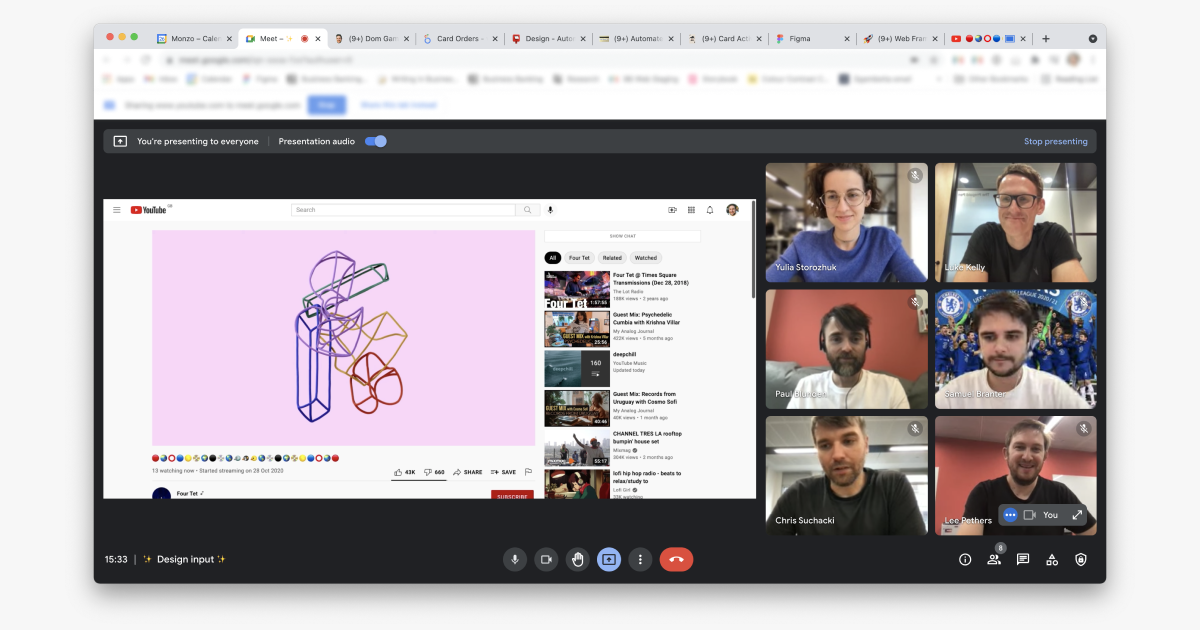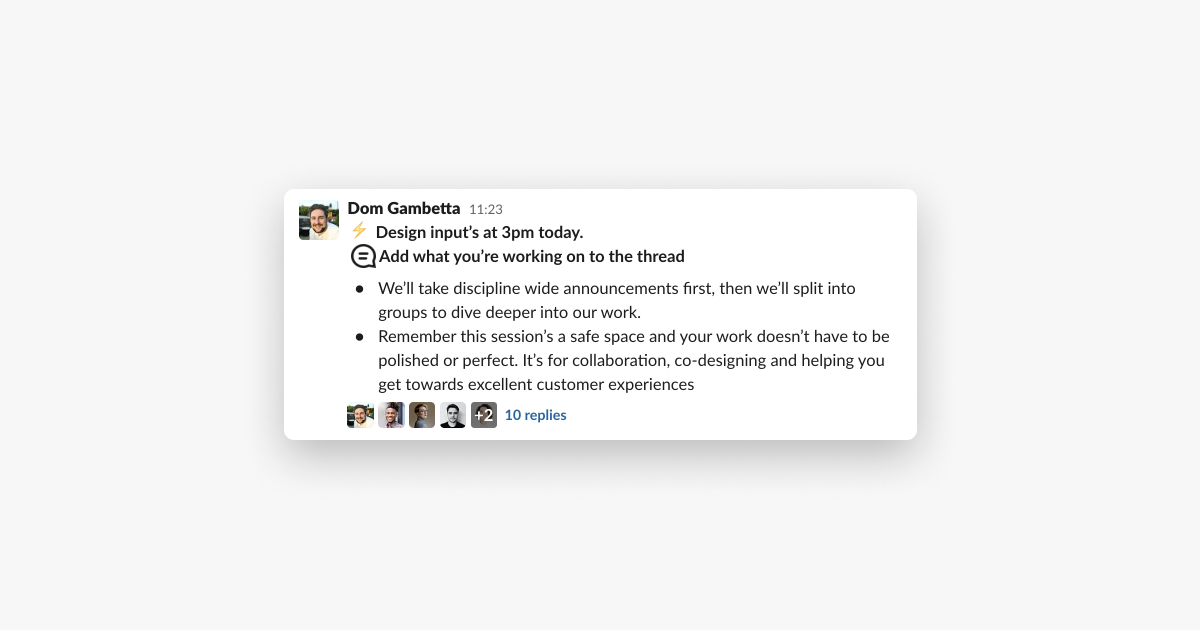Design input is like design critique, but different
It's a discipline-wide, remote-friendly session where product designers, user researchers, brand designers and design directors all bring their knowledge to the table to help provide valuable feedback to work in progress.
This ritual came about when I was deeply inspired by what Figma's design team are doing. It's a bit of a blend of their announcements + critiques, except we add in people from Research and Brand.
Last year, Design at Monzo could be intense, and we had a lot of ground to cover. And while we had our heads down in the work, we didn't spend much time with each other outside of our silos. Awareness of each other's work and elevating each other's skills wasn't really something we were focused on.
I wanted to encourage more of us to share our work and regularly get feedback as we were all fully remote, and help each other get fresh ideas and input from others on the team.
Fast forward a year, there are now 10-20 staff regularly going to design input every week. We're sharing and learning, providing constructive feedback and inputs into each others work. We feel energised and empowered to move forward after a session.

Everyone getting ready for Design Input, with some great music to get us energised
It's a place to share and learn, with others in the team
Running design input isn't just about getting people together for team bonding – we have monthly socials for that! Design input's a place to regularly and safely get constructive feedback on your designs.
Creating a judgement free environment is critical to giving and receiving feedback: a place where we can ask great questions, and explore early pieces of work with people in different teams without judgement. Everyone will bring a new and healthy opinion to what you're solving for. This is really good for your design process.
The other and biggest benefit is that it helps stop ideas and solutions from existing in a vacuum. This session along with our 'design logs' are great drivers for visibility.

There are many other benefits to having design input weekly. We get to build community in our team, designers get to practise explaining their idea aloud, we can create links between projects that wouldn't have existed, we can find common patterns that could reduce engineering effort. Best of all, we can unstick each other when we're a bit blocked, and teach other designers new skills without realising.
So, how can you set it up?
In the next post, we'll let you know how to successfully run your own Design Input